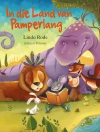In this timeless fairy tale, ‘Beauty and the Beast, ‘ Jeanne-Marie Leprince de Beaumont weaves a rich narrative that transcends the boundaries of a simple love story. With her elegant prose, Beaumont explores themes of inner beauty, redemption, and the transformative power of love against the backdrop of 18th-century French society. The story’s vivid imagery and character-driven plot serve to illuminate the contrasting natures of attraction and virtue, urging readers to look beyond appearances to understand the essence of true kindness and compassion. Beaumont’s narrative style not only captivates the imagination but also serves as a moral framework, aligning with the growing Enlightenment ideals of reason and moral integrity prevalent in her time. Jeanne-Marie Leprince de Beaumont, a prominent figure in the world of fairy tales, was influenced by her own experiences of love and loss, which imbued her storytelling with emotional depth. Raised in a well-off family and later facing adversity, Beaumont turned to writing as a means to convey lessons for her young audience. Her works often sought to impart moral lessons, aligned with the educational objectives of her era that emphasized the importance of virtue in society. ‘Beauty and the Beast’ remains a classic that is not only enchanting for its narrative charm but also profound in its philosophical underpinnings. This book is a compelling read for anyone interested in exploring the interplay between love and morality, making it an essential addition to both personal libraries and literary curricula.
عن المؤلف
Jeanne-Marie Leprince de Beaumont (1711–1780) was a French author who played a pivotal role in the development of the conte de fées, a genre of French fairy tales. Born in Rouen to a family with modest means, Leprince de Beaumont pursued a career in education, which formed a basis for her writing endeavors. In 1756, she published ‘Magasin des Enfants, ‘ a collection of moralistic stories, which included her most famous work, ‘Beauty and the Beast’ (‘La Belle et la Bête’). The story has since become a timeless classic, enchanting children and adults alike with its deeply human themes of inner beauty, love, and redemption. Her rendition of ‘Beauty and the Beast’ is in fact an abridgement and adaptation of Gabrielle-Suzanne Barbot de Villeneuve’s longer version. Leprince de Beaumont’s version is distinguished by its didactic approach and streamlined narrative, making it more accessible to young readers. This adaptation is credited with popularizing the tale across Europe, later inspiring numerous adaptations in literature, film, and other media. Her literary style combined narrative simplicity with a moralistic tone that reflected her vocation as a teacher, often aiming to instruct as much as to entertain. Leprince de Beaumont’s other works, such as ‘The Young Misses Magazine’ (‘Le Magasin des adolescentes’), also reflect her educational goals and remain enduring contributions to the genre of fairy tales and children’s literature.












